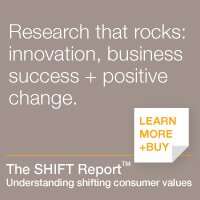The art and science of data visualization is blooming like algae. At Ci, we continue to sponge it up because we are in the midst of researching new ways to visualize The SHIFT Report quantitative data.

Peter Orntoft - Interest no.6 - Law and order Focus: gang related crime and whether the Danes have changed behaviour because of it.
Everyday across our favourite blogs (Fast Co., GOOD, Information is Beautiful, the list goes on…) we are exposed to new sets of data, drawing disparate connections in informative and elegant ways. People are getting creative too, breaking away from the digital and moving to the tangible as seen in . Or breaking from the static and using motion to tell the story (ex. ). Or harnessing the power of the web an designing in levels of interactivity. It’s also not a new discipline as I was reminded today on Co. Design where the infographic of the day portrays Black History in America after the Civil War. Amazing to see the hand rendered marker lines.
The number of tools available to help create these visualizations is also on the rise. They range from simple online tools (google) to completely new programming languages (processing.org) to sponsored open source platforms (visualzing.org) to comprehensive software packages for handing large sets of data.
All this to say, we are excited about employing new techniques to visualize The SHIFT Report data! The potential is enormous. In the coming months we’ll be asking you which queries are most interesting and will share these findings on our blog, visualized and contextualized. Your input may also be used to inform the next SHIFT Innovation Report. If you haven’t downloaded the free summary of our current offering – Defining and Telling Your Brand’s Sustainability Story, .

Created for Seed magazine, this diagram maps the connections between the most disparate of forces, events and systems affecting our planet.
The infographic here quickly drew me in yesterday. It and I spent quite a few minutes together pondering the connections, following the lines. In the center of the concentric circles are the most fundamental influences. Rippling outward are the effects, which create a surprising number of synergies. It was published in SEED Magazine this week and also on view at Visulizing.org where SEED and GE Ecomagination are the founding partners for the online bank of relevant infographics. Click through . Enjoy!






